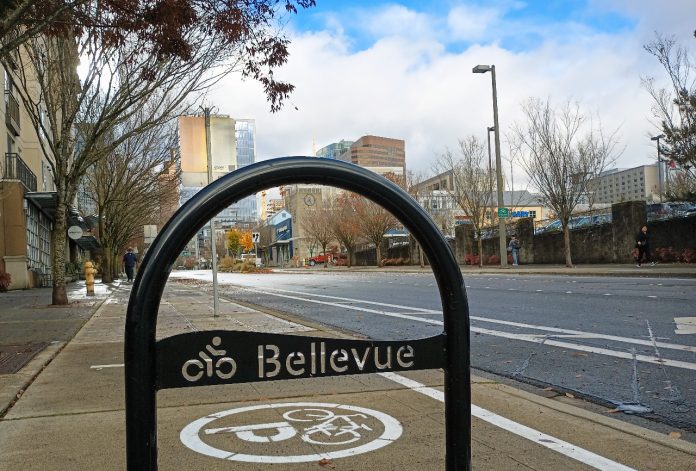
People looking for more places to safely bike in Bellevue got some encouraging news last week, after the Bellevue City Council walked back some prior comments that had appeared to close the door to some proposed bike network improvements and water down others. The council made it clear that pilot projects to improve bike safety are not as off-the-table as they looked to be, even as business interests in Bellevue continue to push back vociferously on any reallocation of street space away from cars.
Tuesday’s session came on the heels of the Bellevue Transportation Commission recommending in a 3-2 vote that the city not even examine the possibility of adding safe biking facilities to Bel-Red Road, a central corridor that stretches from the growth centers of the Spring District and the BelRed Arts District all the way to Redmond. However, Bellevue’s transportation department, led by Director Andrew Singelakis, did not want to go that far. Instead, he proposed to study a potential bike route on Bel-Red Road at some point in the future, likely in the next update to the city’s Transportation Facilities Plan.
The city council stood by the director’s recommendation to conduct a study, and several councilmembers even pushed staff on what is likely be a long timeline for any changes to Bel-Red under the city’s plan. Prospects for Bellevue’s bike network appeared dim after a March study session at which most councilmembers said that reallocating lanes should only happen as a “last resort,” but now there is more hope for quicker improvements to bike safety.
Just this week, the Redmond City Council approved a contract to fully design a buffered bike lane on its portion of Bel-Red Road, reallocating an entire uphill travel lane to make space on the street. Aided by a grant from Washington’s Transportation Improvement Board, construction will start next year, and Redmond accelerated the schedule for that project “because Bel-Red [was] identified as key bike connection to improve access to light rail service in Overlake,” according to the council’s staff report.
In Bellevue, Bel-Red Road is the closest direct connection between the Spring District and BelRed light rail stations and will remain so until a brand new extension of Spring Boulevard is completed, which isn’t set to happen until the early 2030s at the earliest. Overall, the “Bike Bellevue” network proposed in 2023 spanned 11 corridors and 15 miles, six of which required reallocating car lanes in the original proposal.
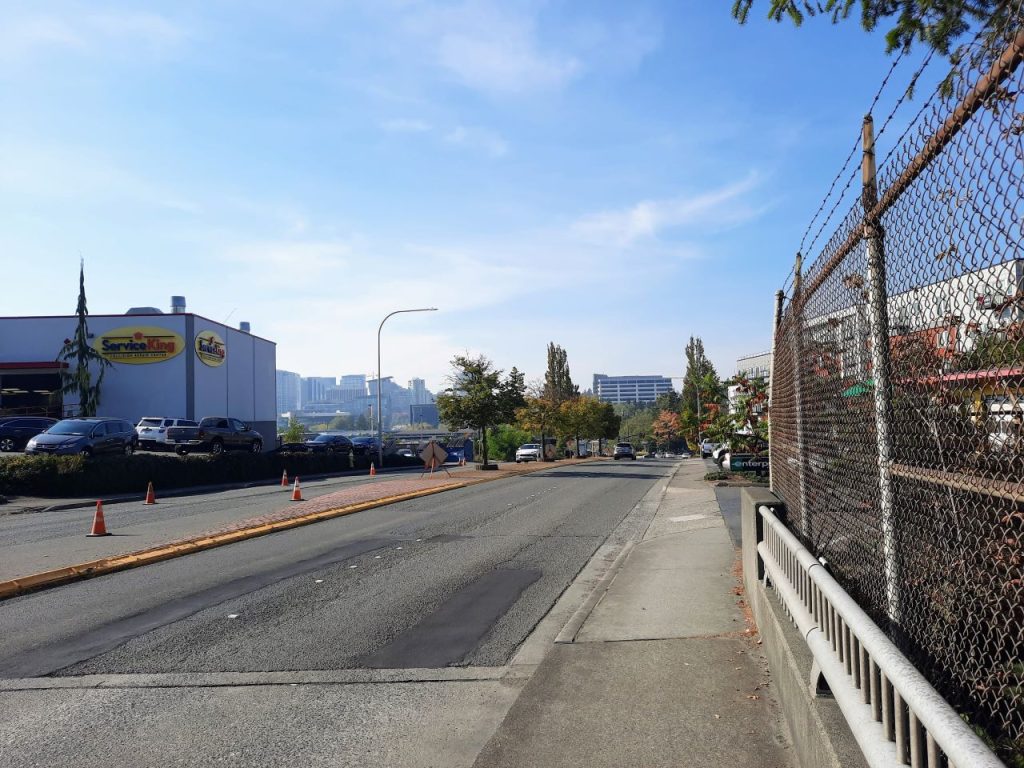
“When I think about the Transportation Commission recommendation, it’s not clear to me how taking this off the table actually makes it safer for all road users, especially as I think about the fact that this corridor has several schools, it has a community center, it has a YMCA, it has lots of businesses that people are going to frequent along that corridor,” Councilmember Janice Zahn told staff, referencing the vote by Redmond Council. “What are those bicyclists going to experience as they come down Bel-Red into Bellevue, going to some of these businesses, and this is going to be our BelRed Art District, where we’re hoping for a lot more vibrancy in our community. So what does that safety actually look like?”
Zahn pressed Drew Magill, the Transportation Commission’s vice chair, on their recommendation to not consider any changes to Bel-Red Road because they were concerned for the safety of anyone who might be encouraged to bike there.
“What I’m hearing you say indirectly is that in Bellevue, we see Bel-Red as a car road, and really don’t welcome bikes because we believe, instead of addressing safety that we just assume that you bike somewhere else,” Zahn said.
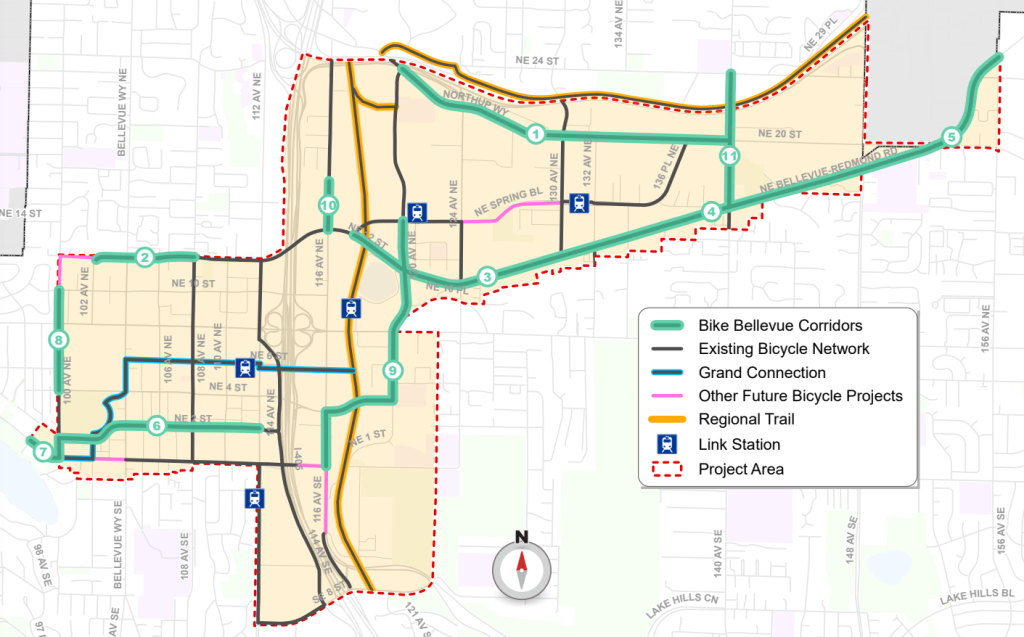
Bellevue Mayor Lynne Robinson, meanwhile, pushed for more rapid implementation of bike facilities on streets that the transportation commission had signed off on scaling back, including the Northup Way corridor that connects directly with the highly used 520 Trail. Between 120th Avenue NE and 124th Avenue NE, Bellevue is set to narrow the travel lanes to provide an additional buffer on existing bike lanes, but between 124th and 136th, facilities would only be added as redevelopment occurs, and the city requires developers to construct bike lanes off-street. And east of 136th, the city is set to only study permanent facilities like they are on Bel-Red.
“I’m all for staff recommendation to include Bel-Red, I would like to do something more rapid on Northup, and I would like to start identifying some of these gaps in our existing bike infrastructure,” Robinson said.
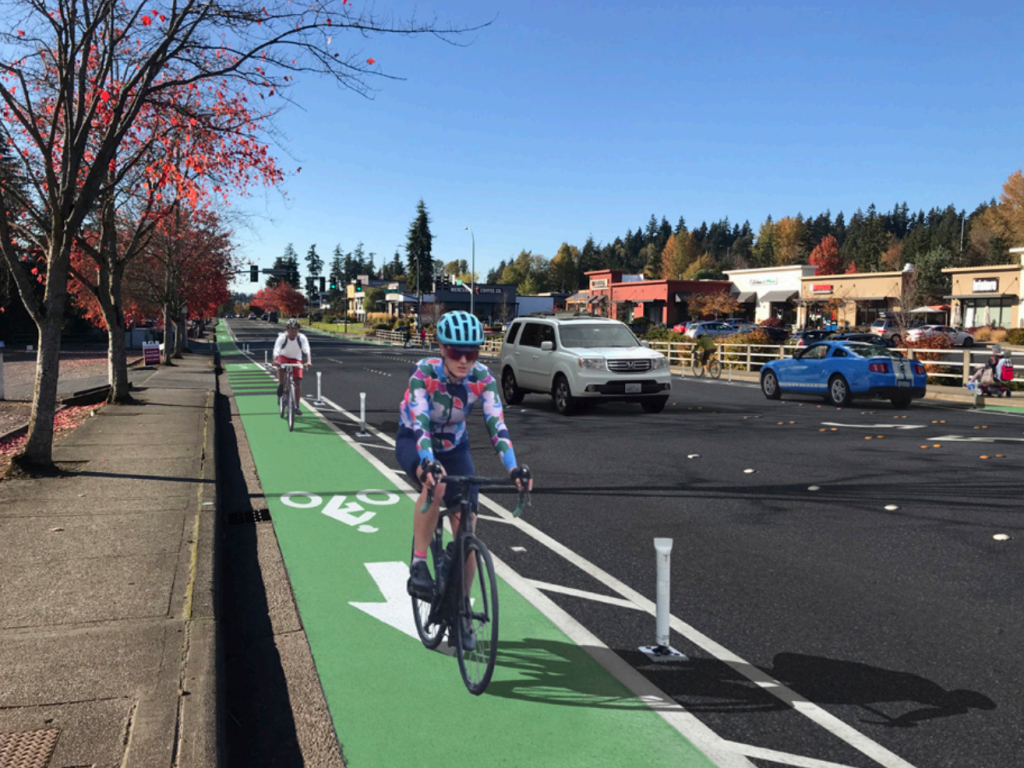
Robinson also pressed for a pilot of bike lanes on 100th Avenue NE, at the back door of Bellevue Square Mall. The Bike Bellevue plan had originally proposed to reallocate a northbound travel lane for a two-way protected bike lane, matching the roadway configuration further south in front of Downtown Bellevue Park. “[I’d] love to see a pilot project on that, to get information so we know what the impact of that is, both good or bad,” Robinson said.
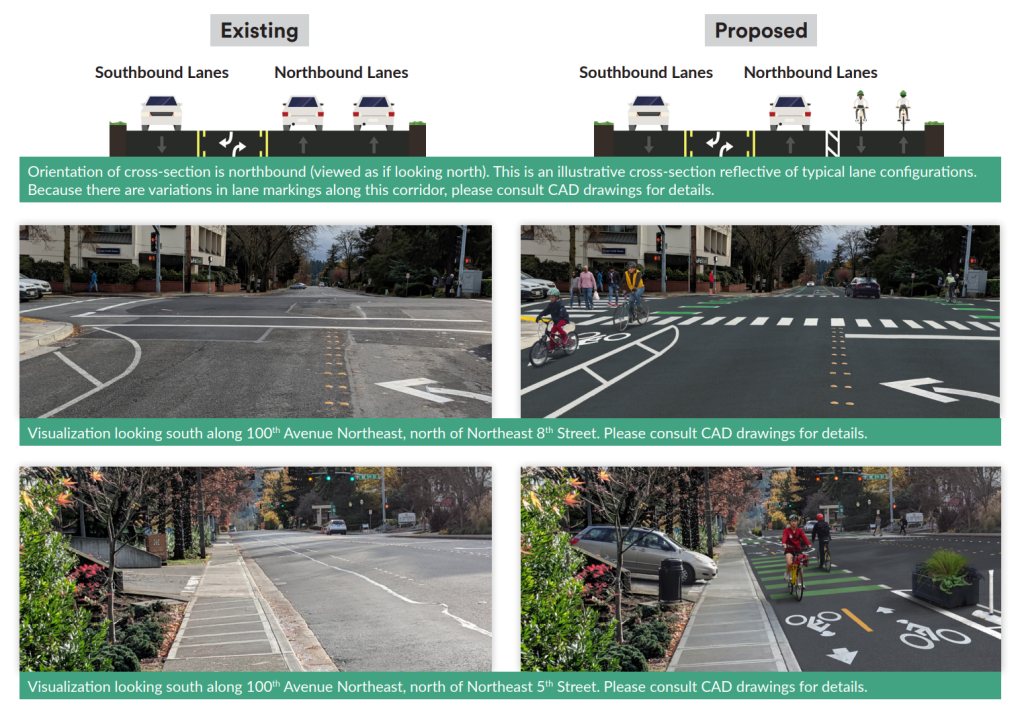
Also pushing staff to think differently was Deputy Mayor Mo Malakoutian, who suggested that they had taken March’s direction that repurposing lanes was to be a “last resort” too literally. “Your definition […] of ‘last resort’ is no repurposing any road capacity for our bike infrastructure, and to me, that’s not the definition of last resort,” Malakoutian said. “First we have an umbrella of rapid implementation; that’s the vision and value I am still following as this body [agreed], and I thought we are going to exhaust all of the options, maybe alternative routes, maybe a Spring Boulevard. And if there is no other option, then of course, let’s just do a pilot.”
Malakoutian referenced 108th Avenue NE in Downtown Bellevue, where general purpose lanes were repurposed into protected bike lanes as a quick-build project with minimal impact on traffic.
“To me, my disconnect is this recommendation is not using the repurposing road lane as a last resort, [it] is removing it whatsoever,” Malakoutian said, while noting his comments were not specifically referring to Bel-Red Road but in general. “We cannot just remove the repurposing [of] the lane whatsoever from all of our plans. I think it should be just the last resort.”
In contrast, Councilmember Jared Nieuwenhuis, the council’s liaison to the Transportation Commission, tried to hold the line, attempting to restrict the conversation to Bel-Red Road and once again reiterating the reasons that the commission had voted to take the street off-the-table.
“Rather than spending more funds on additional studies, additional analysis, I would rather put that money towards the completion of Spring Boulevard, which includes protected bike lanes and wide sidewalks, and those sidewalks, and I appreciate the comments earlier today, sometimes are overlooked and they’re badly needed, badly needed,” Nieuwenhuis said.
But Nieuwenhuis seemed to be on the defensive in Tuesday’s meeting, with City staff leaning toward a need to study safe facilities on Bel-Red and most of the Council pushing to go even further and start implementing projects to fill in gaps in the network. While nothing was decided during the meeting itself, the entire evening’s conversation definitely represented a step back from where things looked like they had landed earlier this year. As the Council debates its biennial budget this fall, the debate over where to make investments will likely take center stage again.
Correction: a previous version of this article misattributed a statement from Councilmember Janice Zahn to Kevin McDonald rather than Drew Magill.
Ryan Packer has been writing for The Urbanist since 2015, and currently reports full-time as Contributing Editor. Their beats are transportation, land use, public space, traffic safety, and obscure community meetings. Packer has also reported for other regional outlets including Capitol Hill Seattle, BikePortland, Seattle Met, and PubliCola. They live in the Capitol Hill neighborhood of Seattle.


